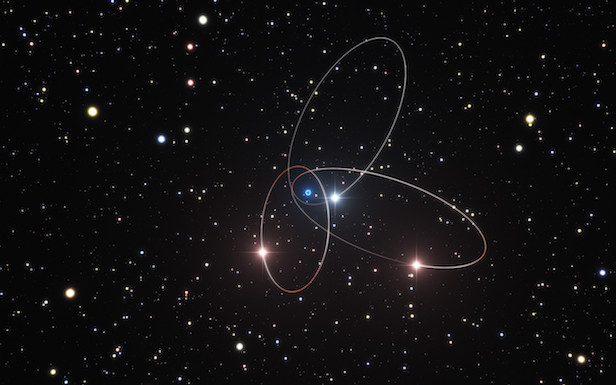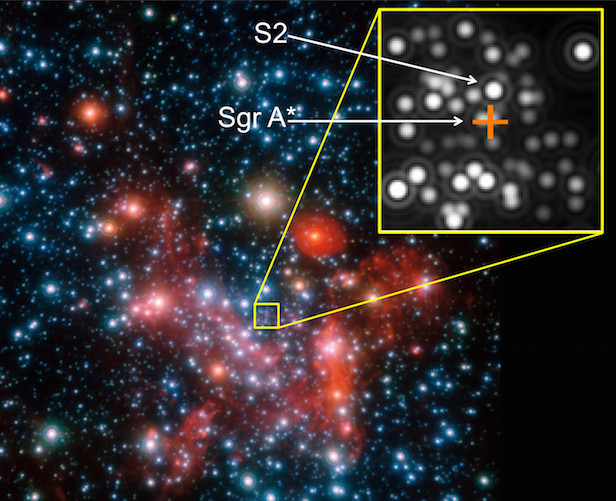Milky Way’s supermassive black hole reveals signs of relativity
By observing stars near our galaxy’s centre, astronomers have seen hints of Einstein’s theory of relativity

The Milky Way’s supermassive black hole has a mass of four million times our Sun. Image credit: ESO/ M. Parsa/L. Calçada
New analysis of high-speed stars orbiting the Milky Way’s supermassive black hole has revealed subtle signs that Einstein’s general theory of relativity is at work close to the galactic core. The European Southern Observatory (ESO)’s Very Large Telescope (VLT) and other telescopes have collected data of the star, named S2, and its orbit for twenty years. This new analysis and results by German and Czech astronomers have provided an exciting prelude for future observations as S2 makes its closest approach to the core in 2018.
The centre of our Milky Way lies 26,000 light years away from Earth, and because of the colossal gravity of the supermassive black hole, there is an abundance of stars enshrouding it. These stars travel at extremely high speeds, and this creates an ideal environment to test gravitational physics.

The black hole, best known as Sgr A*, is marked by the orange cross. This image shows how close S2 is to the cosmic monster. Image credit:ESO/MPE/S. Gillessen et al.
By comparing the measured star orbits to predictions made by classical Newtonian gravity, and general relativity. The results showed a slight deviation in S2’s orbit, which is consistent with predictions from general relativity.
Marzieh Parsa, of the University of Cologne, Germany, says, “The Galactic Centre really is the best laboratory to study the motion of stars in a relativistic environment. I was amazed how well we could apply the methods we developed with simulated stars to the high-precision data for the innermost high-velocity stars close to the supermassive black hole.”
The VLT’s near-infrared adaptive optics instruments were vital for these high accuracy positional measurements. Not only was it vital to observe S2 as it was close to the centre, but by measuring it’s positions further away allowed astronomers to depict the orbit.
In 2018, S2 will make its extremely close approach to the Milky Way’s centre, and the VLT’s GRAVITY instrument will measure the orbit to greater precision then currently available. If confirmed, this would be the first measurement of the strength of the general relativistic effects, achieved by stars orbiting a supermassive black hole.
Keep up to date with the latest space news in All About Space – available every month for just £4.99. Alternatively you can subscribe here for a fraction of the price!




